Abstract
Enhanced lethality for BALB/c mice has been observed after the administration of Salmonella typhosa endotoxin with either actinomycin D, cycloheximide, or nogalamycin. The dose of actinomycin D required to kill half of the mice (LD50) was 0.8 mg/kg in normal animals, 0.35 mg/kg in mice administered 0.08 mg of endotoxin per kg, and 0.28 mg/kg in mice administered 0.2 mg of endotoxin per kg. The LD50 of endotoxin in normal mice was 12 mg/kg and in mice given 0.4 mg of actinomycin D per kg was 0.067 mg/kg. The LD50 of actinomycin D in mice administered 1.8 × 108 live Escherichia coli cells per kg or 1.8 × 109 heat-killed E. coli cells per kg was reduced to 0.4 mg/kg. The LD50 of cycloheximide was 181 mg/kg in normal animals and 28 mg/kg in mice administered 4 mg of endotoxin per kg. The LD50 of endotoxin in mice given 120 mg of cycloheximide per kg was 0.02 mg/kg. Enhanced lethality due to various combinations of cycloheximide and endotoxin was abolished by pretreatment of mice with endotoxin. The LD50 of nogalamycin was 21 mg/kg in normal mice and 13 mg/kg in mice receiving 1 mg of endotoxin per kg.
Full text
PDF
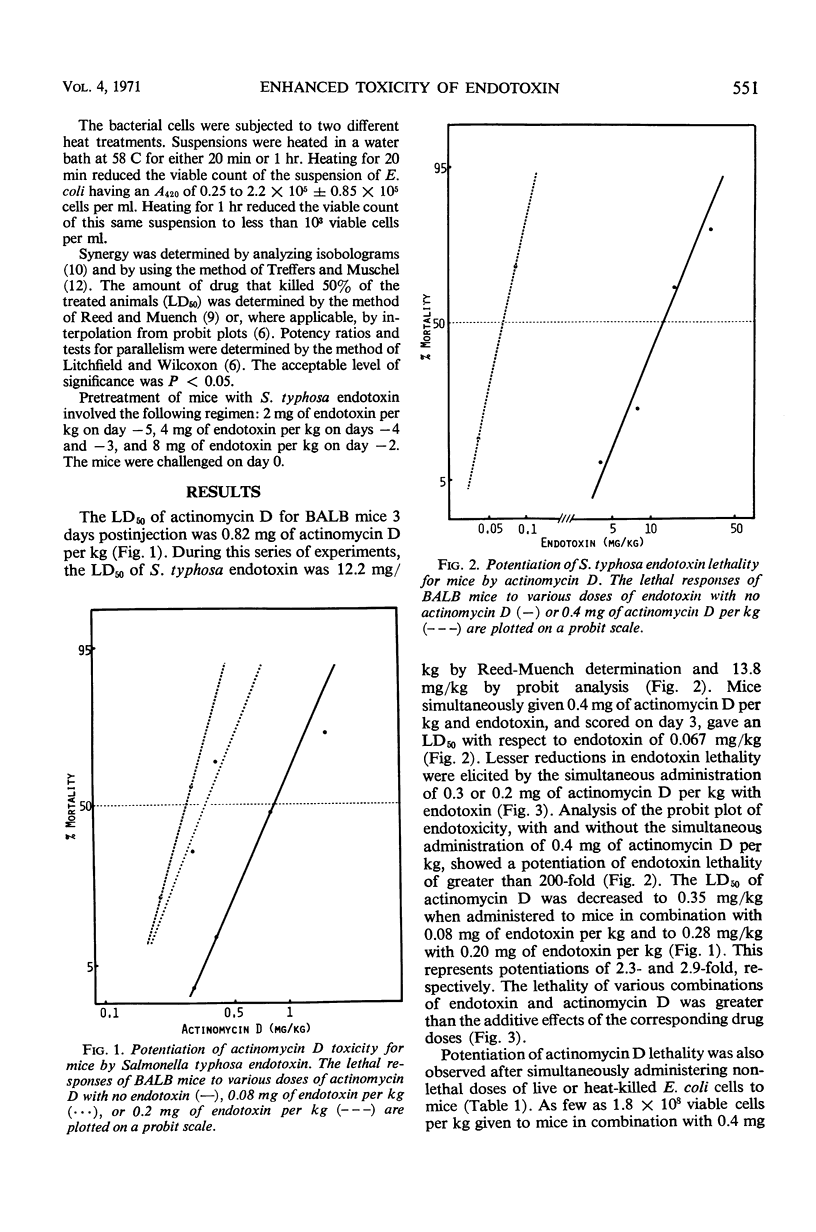
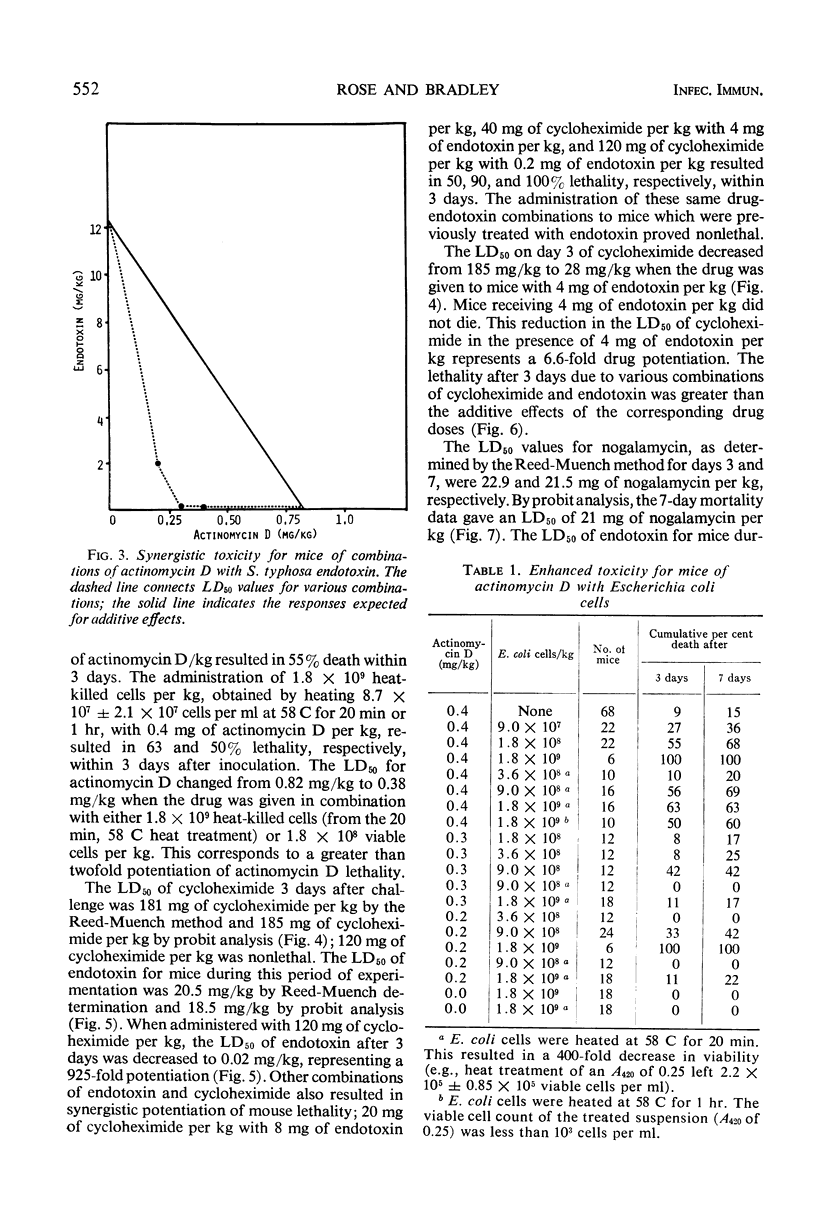
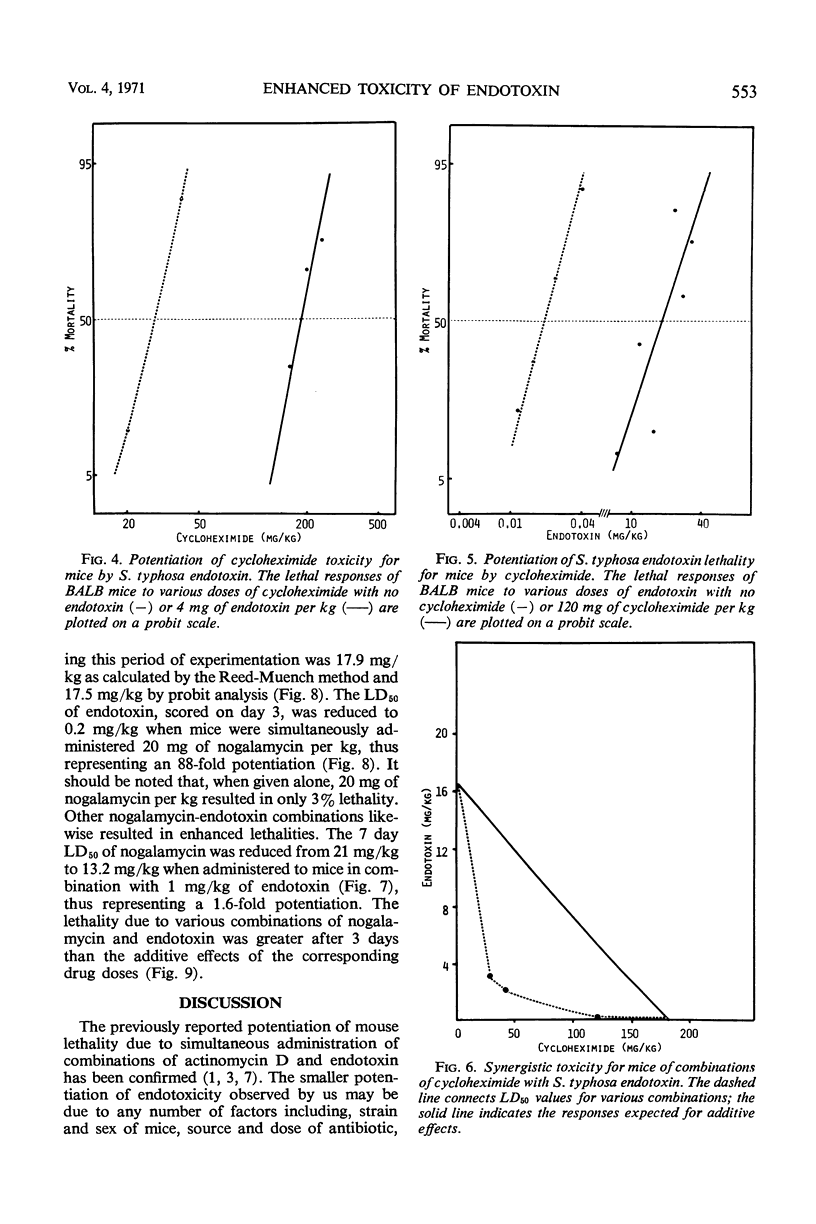
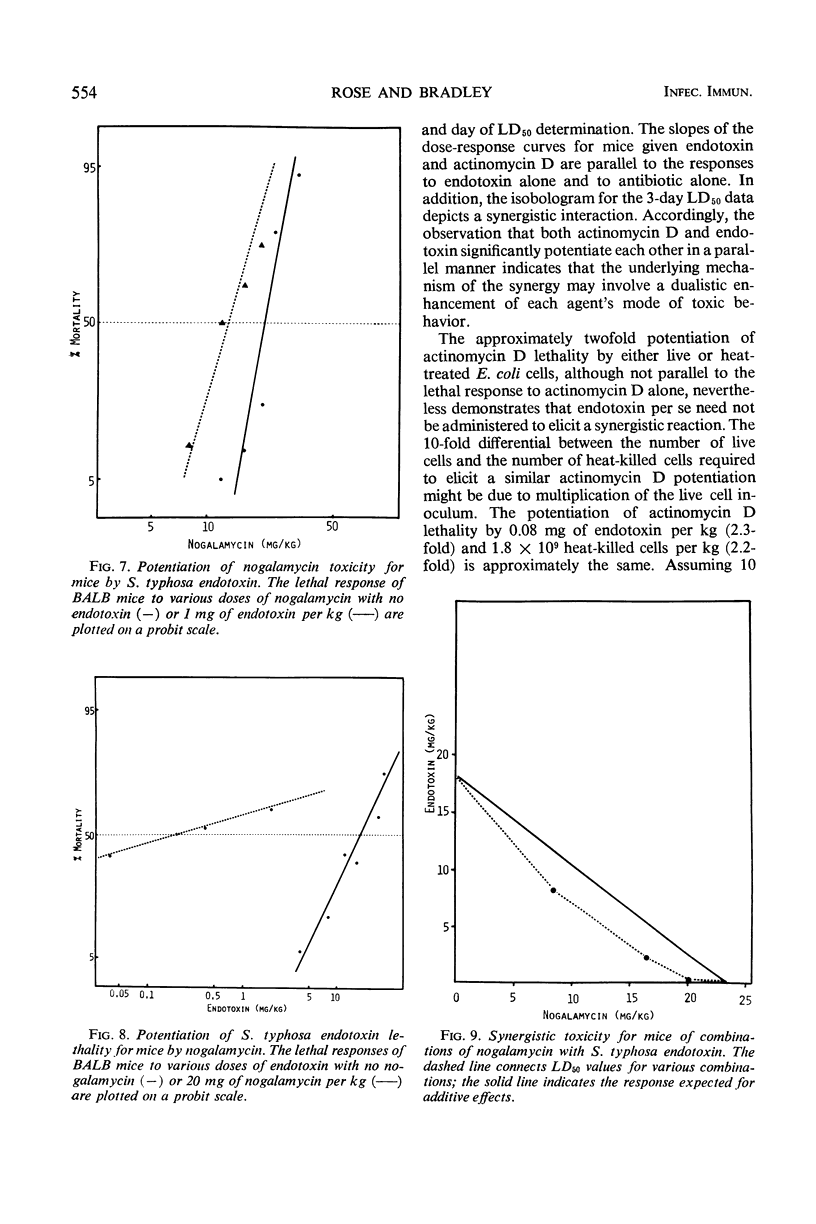
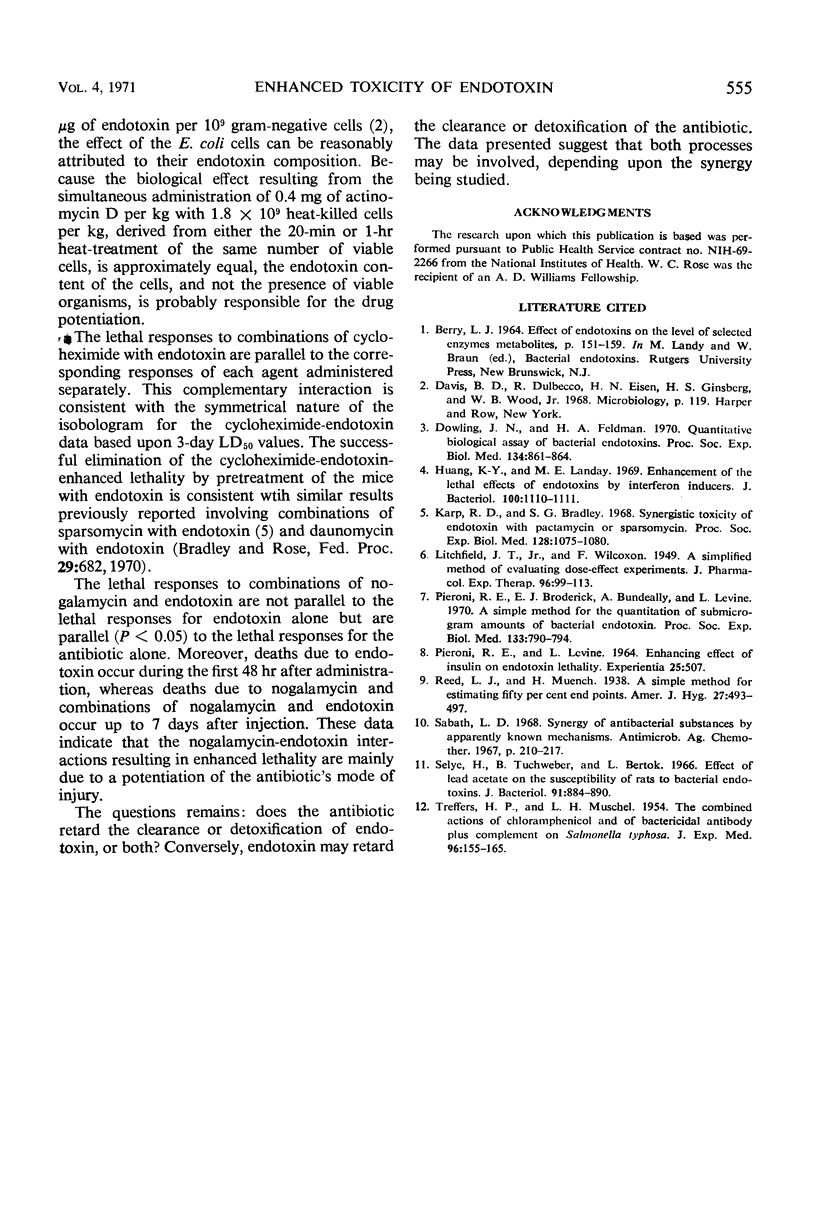
Selected References
These references are in PubMed. This may not be the complete list of references from this article.
- Dowling J. N., Feldman H. A. Quantitative biological assay of bacterial endotoxins. Proc Soc Exp Biol Med. 1970 Jul;134(3):861–864. doi: 10.3181/00379727-134-34899. [DOI] [PubMed] [Google Scholar]
- Huang K. Y., Landay M. E. Enhancement of the lethal effects of endotoxins by interferon inducers. J Bacteriol. 1969 Nov;100(2):1110–1111. doi: 10.1128/jb.100.2.1110-1111.1969. [DOI] [PMC free article] [PubMed] [Google Scholar]
- Pieroni R. E., Broderick E. J., Bundeally A., Levine L. A simple method for the quantitation of submicrogram amounts of bacterial endotoxin. Proc Soc Exp Biol Med. 1970 Mar;133(3):790–794. doi: 10.3181/00379727-133-34565. [DOI] [PubMed] [Google Scholar]
- Pieroni R. E., Levine L. Enhancing effect of insulin on endotoxin lethality. Experientia. 1969 May 15;25(5):507–508. doi: 10.1007/BF01900787. [DOI] [PubMed] [Google Scholar]
- Sabath L. D. Synergy of antibacterial substances by apparently known mechanisms. Antimicrob Agents Chemother (Bethesda) 1967;7:210–217. [PubMed] [Google Scholar]
- Selye H., Tuchweber B., Bertók L. Effect of lead acetate on the susceptibility of rats to bacterial endotoxins. J Bacteriol. 1966 Feb;91(2):884–890. doi: 10.1128/jb.91.2.884-890.1966. [DOI] [PMC free article] [PubMed] [Google Scholar]
- TREFFERS H. P., MUSCHEL L. H. The combined actions of chloramphenicol and of bactericidal antibody plus complement on Salmonella typhosa. J Exp Med. 1954 Feb;99(2):155–165. doi: 10.1084/jem.99.2.155. [DOI] [PMC free article] [PubMed] [Google Scholar]


